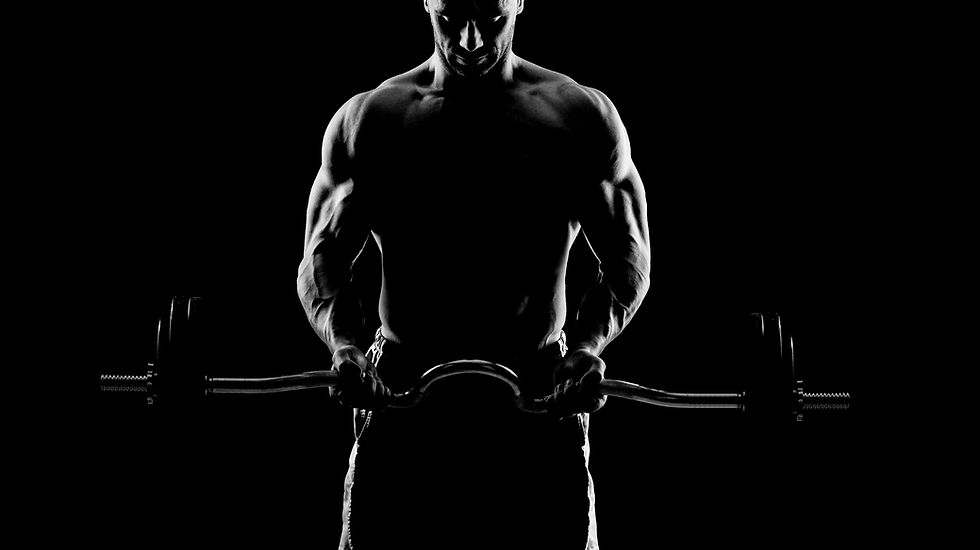Breathing: The Overlooked Ace in the Hole
- Tuomas Anttila
- Jan 18, 2023
- 3 min read
We breathe without needing to be prompted. It belongs among the list of other involuntary physiological processes that our autonomic nervous system regulates (heart rate, blood pressure, and digestion). But unlike the other processes, we can become consciously aware of its happening and "take control" of it, so to speak.
Sure, we often associate normal breathing with survival and heavy breathing as something that follows intense physical effort, but it can also impact the range of motion we possess, our stability as well as our ability to exert force.
If anyone remembers their first few years in the gym, I can almost guarantee that the notion of how to breathe was the last thing on their mind. Big arms or a flat stomach? Just tell me what to lift and for many reps.
Sure, that'll work just fine. But our bodies are amazing machines, and our muscles and joints work in tandem with our respiratory processes. So learning some ways to couple breathing with lifting can enhance the quality of your training in many ways.
The role of breathing in mobility
Our primary respiratory muscles are the diaphragm and the intercostals, but if they aren't being used we can also recruit secondary muscles to assist with breathing. Some muscles also work as stabilisers to joints (e.g. upper traps stabilise the shoulder joint), and if they are forced to work as a breathing muscle they can become distracted from their roles in joint function and stability.
Okay, so what does that mean? It means that if you experience breathing issues you can also have mobility issues and vice versa. Issues don't mean that you're breathing "wrong", but rather that you may be relying on secondary breathing muscles more so than the primary muscles.
This is also why mobility work such as dynamic stretching should be accompanied by focused breaths.
Intra-abdominal pressure
IAP is basically our bodies' pressure management system. The better we are at creating and maintaining IAP, especially during heavy lifts that load the spine (squatting, deadlifting, pressing, and pulling), the better our force production.
"Brace your core!"
This a guaranteed phrase you'll hear coming from a personal trainer during a session. The trouble is, it can be hard to know what that feels like, because contrary to what most people think, it's not just squeezing your abs.
If you want to test what IAP feels like, try this simple (but deceptively tough) drill:
Lie on the floor on your stomach. Prop yourself up on your elbows, then drag your knees forward a few inches so that your thighs are off the floor. Pull your sternum towards your waist and tuck your hips. Now try to take a deep breath into your stomach and chest while holding that position and exhale through your mouth.
Though this is a relatively easy position to maintain, purposeful breathing elevates this exercise, and you'll get a glimpse into how IAP feels. Of course, we don't want nor should have to think so much about breathing during our heavy lifts, but essentially we want our bodies to be managing pressure in a similar way while we get on with the job at hand.
Closing Thoughts
There are times when synchronising your breathing pattern during lifts can not only help improve your range of motion but also allow you to lift heavier. Free-weight squatting requires a greater emphasis on the creation of internal stability than squatting on a machine. Anecdotally, I've found huge benefits from implementing this "rule" for breathing during a machine squat and a free-weight squat.
On a machine squat inhaling during the descent and holding the air in at the bottom, with a pressurised exhale on the ascent.
*this breathing cycle can and will break over the course of a set, but the advantage of machines is that the integrity of the set won't be compromised due to the external stability it provides
On a free-weight squat inhaling at the top of the rep, holding the air in at the bottom, and exhaling forcefully on the ascent.
*by virtue of the exercise, once you're no longer able to synchronise your breathing, the set is usually done, or at least your ability to produce force is likely affected
Try the above, then try the opposite (breathing in on the way up and exhaling on the way down) and compare how things feel.
Often the concentric portion of the lift can be likened to throwing a punch. Go listen to a boxer punching a heavy bag. Each punch is accompanied by a forceful hiss of air. In between punches, they're taking a breath in. Apply the same thought process to your next training session.





Comments